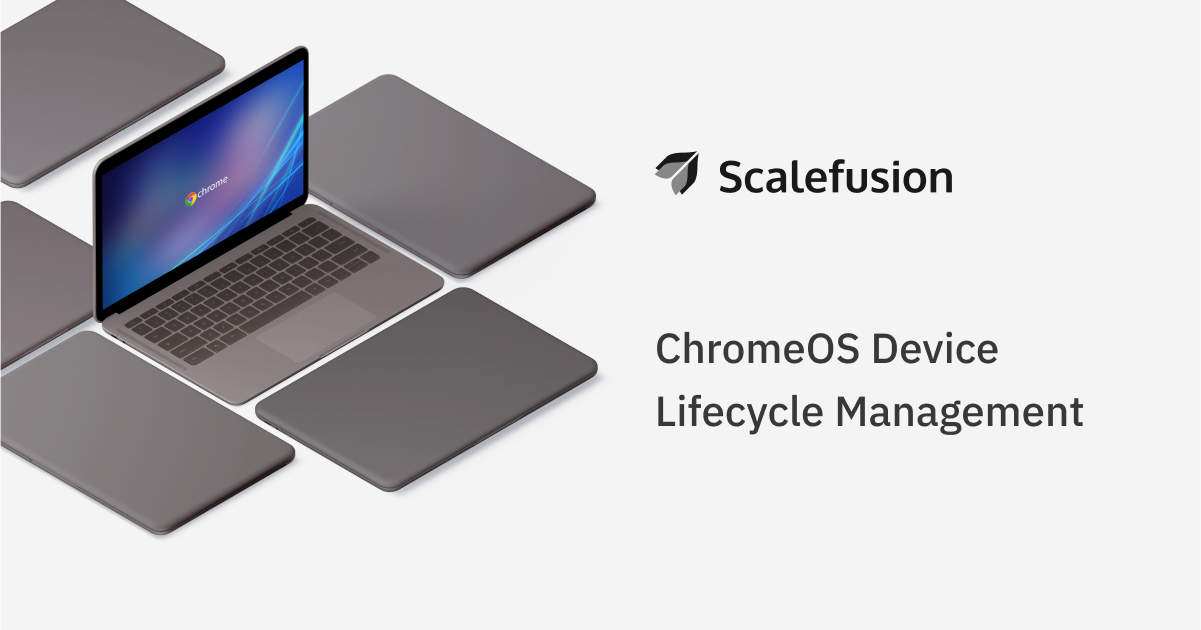Just-in-time (JIT) paradigm reforms the concept of identity and access management by emphasizing efficiency and security through time-sensitive access control and optimal resource provisioning.
It focuses on providing access and resources exactly when they are needed, rather than pre-allocating them in advance. This approach aligns with modern IT demands, where flexibility and precision are crucial.
JIT ensures that users receive permissions only for the duration necessary to complete their tasks. This minimizes the window of opportunity for unauthorized access and reduces the potential attack surface.
This blog will provide a comparative overview of JIT provisioning and JIT privileged access, highlighting how they work, their key components, benefits, and challenges.
What is Just-in-Time Provisioning?
Just-in-time (JIT) provisioning automates the creation of user accounts for single-sign-on (SSO) powered web applications using the security assertion markup language (SAML) protocol. When a new user attempts to log into an authorized app for the first time, JIT provisioning triggers the transfer of necessary information from the identity provider to the application.
This process of information transfer eliminates the need for manual account setup, significantly reducing administrative tasks and enhancing productivity. JIT provisioning ensures a seamless log-in experience for new users while maintaining high security and efficiency by streamlining account creation
How does it Work?
To establish just-in-time (JIT) provisioning IT admins need to configure an SSO connection between an identity provider and the target service provider (web application) and include the necessary user attributes that the service provider requires.
When a new user logs in, the identity provider sends the required information to the service provider via SAML assertions. This automatically creates the user’s account without manual intervention.
To implement JIT provisioning, administrators can use a centralized cloud identity provider or an SSO provider integrated with their existing directory. Moreover, the target service provider (web application) must also support JIT provisioning to ensure smooth operation.
JIT provisioning centralizes the application of authorization policies, providing log-in access based on user roles or groups. For instance, when a developer logs in, they automatically receive all the permissions associated with the developer role, ensuring they have immediate access to the required tools and resources.
Use Cases
Just-in-time (JIT) provisioning is particularly useful for industries with high turnover rates, a need for rapid onboarding, and significant user access management needs. JIT provisioning is most useful for the following industries:
- Knowledge Worker: Just-in-Time (JIT) Provisioning serves knowledge workers by automating account creation enabling them to log into new web applications, tools and data across cross different teams or projects. With SSO integration, JIT Provisioning automatically grants access based on roles, ensuring knowledge workers have immediate access to the tools and resources they need, boosting productivity and security.
- Retail: Retail environments often experience high employee turnover and need to quickly onboard new staff. JIT provisioning streamlines the process of user lifecycle management, ensuring that new hires can start working with minimal delays.
- Healthcare: Healthcare organizations require strict access controls to ensure compliance with regulations such as HIPAA, and do rapid onboarding of new healthcare staff to provide them with immediate access to patient information. JIT provisioning helps maintain security and efficiency in managing healthcare professionals’ accounts.
- Last mile delivery: The delivery sector frequently hires new drivers and needs to quickly integrate them into its systems. JIT provisioning facilitates rapid account creation and access to delivery management tools, improving operational efficiency and service speed.
- Cab Aggregators: Ride-sharing companies experience high turnover and need to quickly onboard drivers. JIT provisioning helps manage driver accounts efficiently, ensuring that new drivers can start working as soon as possible.
What is Just-in-Time Privileged Access?
Just-in-time (JIT) privileged access is a security practice within privileged access management (PAM). It grants temporary privileged access to devices, applications, or systems, upon user request for a limited time frame. This method aligns with the principle of least privilege (PoLP), ensuring users receive just enough access to perform specific tasks, minimizing the risk of excessive or standing privileges that malicious actors could exploit.
JIT privileged access helps prevent unauthorized access and privilege creep by providing time-limited access, enhancing the overall security posture of an organization. This approach reduces the risks associated with giving users more than required privileges, creating a more secure and controlled environment.
How does it Work?
Just-in-time (JIT) privileged access is a security approach that optimizes control over user log-in based on three critical aspects: location, time, and actions. Here’s a closer look at how JIT access functions:
- Location: Access is granted only to specific instances, network devices, servers, or virtual machines where the user needs to perform their tasks.
- Time: Permissions are provided for a short, predefined duration, ensuring access is limited to the necessary timeframe.
- Actions: Access is tailored to the user’s specific intent, allowing only the actions required for the task at hand.
In a typical JIT access workflow, a user submits a request to access a particular resource. This request is evaluated against established policies, or an administrator reviews and decides whether to grant or deny access.
Once approved, the user performs their tasks within the designated timeframe. After completion, the privileged access is automatically revoked until it is needed again in the future. This systematic approach enhances security and ensures efficient access management within an organization.
Use Case
Just-in-Time (JIT) Privileged Access is particularly useful for industries where sensitive data and systems need to be tightly controlled, and where temporary or task-specific access is common. JIT-privileged access is most beneficial for the following industries:
- Banking, Financial Services, and Insurance (BFSI): JIT privileged access is extremely beneficial in the BFSI sector due to the high sensitivity of financial data and transactions. The principle of least privilege is crucial here to prevent fraud and data breaches. JIT access ensures that investigators, auditors, and IT staff only have access for the exact duration required, minimizing risk.
- Healthcare: In healthcare, maintaining the confidentiality of patient data and securing medical devices is critical. JIT privileged access allows healthcare professionals to gain temporary access to sensitive information or systems for emergencies or specific tasks, enhancing security and ensuring compliance with data protection regulations.
- Education: While JIT access is beneficial in educational institutions for managing IT system maintenance and administrative tasks, its impact may not be as critical compared to the BFSI and healthcare sectors. However, it still adds value by providing controlled, temporary access.
- Hospitality: In the hospitality industry, JIT access helps manage and secure booking systems and guest information during special events or high-demand periods. While important, the need might not be as critical compared to industries with more stringent data protection requirements.
- Knowledge Workers: Just-in-Time Privileged Access grants knowledge workers temporary elevated permissions for doing specific tasks, based on their location, time, and required actions. This ensures they only access what’s necessary for their job role within a limited timeframe, reducing the risk of excessive access while maintaining security.
Difference Between Just-in-Time Provisioning and Just-in-Time Privileged Access: Key Components, Benefits and Challenges
Just-in-Time Provisioning
Key components of JIT Provisioning
a. Real-time account creation: JIT provisioning enables the user to send a request to generate a user account in real time for accessing a web application.
b. Contextual user account: User accounts are granted according to the user’s role in the organization and the task that is to be performed.
c. Automated account management: JIT provisioning automates the process of managing account creation and deactivation without the intervention of IT admins.
What are the benefits of JIT Provisioning?
a. Efficient onboarding: JIT provisioning streamlines the onboarding process by automating user account creation. New users receive immediate access to necessary resources when they need them, enhancing overall efficiency.
b. Reduced IT workload: Automated provisioning of user accounts, minimizes the manual workload of IT teams. This allows them to focus on more strategic initiatives, saving time and reducing administrative burdens.
c. Enhanced security: JIT provisioning minimizes the risk of unnecessary or excessive access. Accounts are only created when users log in for the first time, ensuring that access levels are appropriate and creating a more secure environment.
d. Quick login experience: JIT provisioning facilitates a seamless user experience, with reduced friction during login. Users gain access to applications through Single Sign-On (SSO) avoiding unnecessary delays.
Challenges of JIT Provisioning
a. Dependency on SAML: JIT provisioning relies on the security assertion markup language (SAML) protocol. Any issues or complexities with SAML can disrupt the provisioning process and affect overall functionality.
b. Limited user assignment control: In some systems, such as project management tools, users can only be assigned roles after their initial login. This limitation can reduce control over user assignment and management.
c. Challenges with offboarding: JIT provisioning often lacks automated offboarding and account revocation features. This can make it difficult for users who no longer need it to deactivate access immediately.
d. Complexity of XML-based structure: The XML-based nature of SAML introduces complexity, which can impact the readability and ease of integration of provisioning processes.
e. Potential for SSO disruption: JIT provisioning is tied to the SAML protocol, making it vulnerable to disruptions in single sign-on (SSO) systems. Such disruptions can affect the overall authentication experience.
Just-in-Time Privileged Access
Key Components
a. Access policies and rules: Access policies and rules outline the conditions under which users can request access to specific resources, ensuring that access is granted only to authorized individuals for legitimate purposes, and complies with organizational security standards.
b. Identity verification mechanisms: Identity verification mechanisms authenticate the user requesting access to ensure that only legitimate individuals with valid credentials are granted entry, preventing unauthorized access to sensitive resources.
c. Time-limited access tokens: Users receive tokens with a set expiration time, allowing temporary access to perform tasks. Once the token expires, access is automatically revoked, reducing the risk of unauthorized privileges.
What are the benefits of JIT Privileged Access?
a. Reduces the attack surface: JIT privileged access reduces the attack surface by minimizing standing privileges, thereby minimizing the risk of malicious users exploiting privileged accounts. Once a task is completed, privileges expire and accounts are disabled, improving the overall security posture.
b. Streamlines access workflow: JIT privileged access automates the approval process for privileged access requests, streamlining workflows for administrators, operations teams, and end-users without compromising productivity. Access can be granted as needed, ensuring operational efficiency.
C. Simplified auditing: Just-in-time access controls privileged sessions and simplifies audits by keeping a detailed log of user activities carried out during the session.
d. Defines third-party access: JIT privileged access facilitates secure, time-bound access for third-party users such as contractors and vendors. Administrators can grant standard users elevated time-based privilege access for tasks like testing and maintenance. Once the time frame expires, the privileged access is automatically revoked.
e. Eases management of privileged accounts: JIT privileged access simplifies privileged user management by eliminating standing privileges, reducing the need for constant password resets and recoveries. Automated tasks include credential rotation, access expiration, and account deletion, with request approvals handled automatically.
Challenges of Just-in-Time Privileged Access
a. Violates zero-trust policy: Zero-trust security policies operate on the principle of “never trust, always verify.” Once JIT access is granted, there is an implicit trust that the user’s actions are legitimate during the active session. If an attacker gains access during this period, they can exploit the privileges without continuous verification.
b. Compliance breach: Implementing just-in-time privileged access can lead to compliance challenges. For instance, if a healthcare organization adopts JIT privilege access and a healthcare professional with JIT access leaks sensitive patient information, this breaches the Health Insurance Portability and Accountability Act (HIPAA) compliance policy which can result in legal and financial repercussions. Similarly, other compliance regulations such as the General Data Protection Regulation (GDPR) and Payment Card Industry Data Security Standard (PCI DSS) can also be violated.
c. User resistance: Due to the perceived inconvenience of frequently requesting access users might experience resistance using JIT privilege access. This resistance can hinder the effectiveness of the ongoing operations and impact overall productivity if users find the process cumbersome or disruptive to their workflow.
d. Implementation: JIT privileged access is a stand-alone feature. Its standalone nature makes it heavily dependent on a service provider such as an IAM or UEM solution. Organizations will need to adopt an IAM or a UEM solution with IAM capabilities to implement just-in-time privileged access within their organization.
Just-in-Time Provisioning vs Just-in-Time Privileged Access: A Tabular Comparison
| Features | Just-in-Time Provisioning | Just-in-Time Privileged Access |
| Focus | Automated provision of user attributes or credentials. | Providing time-based privileged access. |
| Purpose | Ensures that necessary information is transferred from the identity provider to the service provider (web application). | Ensures users receive just enough access to perform specific tasks for a predefined time frame. |
| Best Used For | Managing temporary user profiles and accounts. | Elevating user access privilege. |
Just-in-Time Provisioning and Just-in-Time Privileged Access: Leverage the Best of Both
Integrating just-in-time provisioning and just-in-time privileged access offers IT admins a balanced approach to managing users and their access. JIT provisioning optimizes resource allocation by providing them when needed, enhancing efficiency and scalability.
Simultaneously, JIT privileged access offers security by granting temporary, time-based access, minimizing the risk of unauthorized use. Together, these practices offer a comprehensive solution that enhances agility in business operations while safeguarding against potential security threats, making them best suited for modern IT environments.
Get in touch with our experts to book a demo and implement just-in-time privileged access with Scalefusion UEM.



